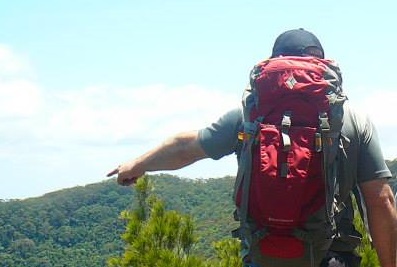The most important piece of equipment for the individual member of a Search and Rescue Team is the backpack that he or she carries when they go into the wilderness searching for missing or lost people.
This backpack has gone by a few names over the years,obviously it depends on the lingo that your team uses, but this backpack is referred to as ‘the SAR pack’ (Search and Rescue pack).
It does go by other names such as ‘Search pack’, ’24-hour pack’, or ’24-hour SAR pack’. The reference to 24 hours is obviously regarding the amount of time this pack is useful for, but some teams use 48 hours or 72 hours regarding how long this pack will be of use, and how much equipment is inside it.
However, the term ‘Survival pack’, or ’24-hour survival pack’ is sometimes used to name this type of pack, which some people find confusing. Is it a ‘SAR pack’ or a ‘Survival pack’?
To help understand what a more fitting name for this pack is,we should look at its purpose. The purpose of this pack is for the SAR team member to complete their tasking. Such as being tasked to navigate through the wilderness and conduct a search over a large area for a missing person and maintain communication with the command post.
The SAR team member will use his SAR pack to complete their tasking, not just survive. When we talk about survival, we have images like Tom Hanks on Castaway. Using the minimal amount of equipment to just stay alive. One technique used when we talk about survival is ‘The Rule of 3’. This refers to the average time you can survive without certain resources. For instance, you can survive for 3 days without water, and 3 weeks without food. With this in mind, a 24-hour survival pack would not need food or water. However, a SAR pack does have food and water in it, but this is so the SAR team member can stay nourished and hydrated well enough,so they can complete ‘the job’, not just survive.
Many people have mentioned that the purpose of the SAR pack is to have the maximum amount of effectiveness with the minimal amount of equipment. The SAR team member carries a SAR pack, so they can be effective in completing ‘the job’. A common acronym for search and rescue is ‘L.A.S.T’, Locate, Access, Stabilise, Transport. This refers to the different stages that a SAR team may be required to respond to. The SAR team will require equipment to navigate through the wilderness in order to ‘Locate’ the subject. To ‘Access’ may require some rope rescue equipment, Medical equipment could be needed to ‘Stabilise’, and a stretcher may be required to ‘Transport’ the subject to the Ambulance.
A SAR team may be required to travel a distance before they start conducting search patterns, or before they can help the subject, and that is why a backpack is carried. The reason a SAR team is called to an incident is so they can help. The SAR team should talk before they leave the command post and head off into the wilderness. They should talk about what is required and what equipment they need to carry with them. So that when they locate the subject, they have the necessary equipment to help them and to keep everyone involved safe. This could include navigation equipment, communication equipment, medical equipment, rescue equipment, and survival equipment. A common survival pack is usually small enough to fit in a pocket. Some SAR team members do have a survival pack this small inside their SAR pack. If a member wants to scout a very short distance ahead to look for an easy way out, or a possible helicopter landing zone, they may leave their SAR pack with their team who is looking after the subject, and just carry a survival pack in their pocket. This is another example to help distinguish the difference between a SAR pack and a survival pack.
You’re not just trying to survive, you’re trying to complete the job. As already mentioned there is more in a SAR pack then just survival equipment. One of the key survival techniques is improvising. Improvising to achieve a survival element with the minimal equipment you have, such as using a flint to start a fire instead of just using some matches or a lighter. A SAR pack can also be used for improvising, not just improvising to survive, but improvising to complete the job. As mentioned before we are trying to have the maximum amount of effectiveness with the minimal amount of equipment, so it’s not just for surviving.
Whether you still decide to refer to this type of back pack as a survival pack or not is up to you, but just as long as we understand that the purpose of the SAR pack is to make each person a useful member of the SAR team. Taking a few basic pieces of survival gear and no search and rescue equipment may not make you a useful member of the team, and this could delay the rescue.
Look after yourself and your team members, as well as the subject.


I think this is among the most significant information for me. Donia Skelly Kit
Thanks a lot for the article. Really looking forward to read more. Fantastic. Dorthy Reade Spalla
Hello there. I found your web site via Google even as looking for a similar topic, your web site got here up. It appears good. I have bookmarked it in my google bookmarks to come back then. Wallie Winthrop Bonucci